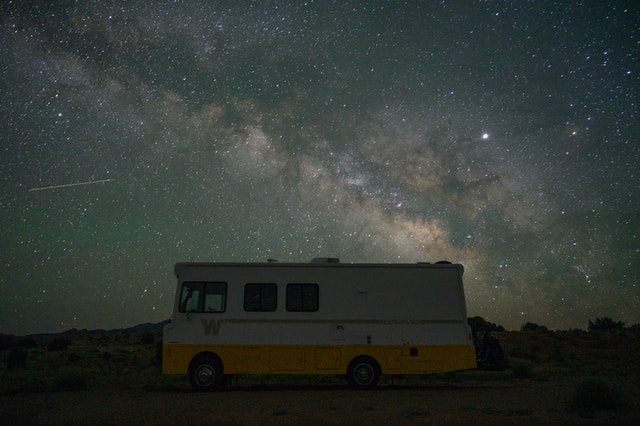UPDATE: October 28, 2022
Starlink is now available for in-motion use!
According to their announcement, you won’t have to stop to connect anymore. Instead, you’ll be able to “stream movies, play games, and make video calls all while moving towards your next adventure”.
Starlink is referring to this update as “Flat High Performance Starlink” and says orders can be placed immediately. The product boasts a “wide field of view and enhanced GPS capabilities” and it can connect to more satellites which allows for more consistent connectivity while traveling.
One key difference is that the hardware is a permanent installation. They call it more resilient — but it also means that it has to be installed through Winegard at an RV dealership.
*******
Original post from June 8, 2022
Yes, Elon Musk and Starlink have finally delivered on the long-awaited mobile internet promise for RVers. Having dealt with slow (and expensive) mobile hotspots for years, it does sound intriguing to have the “high-speed and low-latency” they’re touting.
To sweeten the deal, there is also currently no waitlist. If you want Starlink for your RV, all orders will be shipped out after purchase. But before you grab your credit card — you may want to consider a few of the following factors to determine if Starlink is for you.
Price
This one is always important. According to the Starlink website, it’s $130/month with a $599 hardware cost. Although they do offer a 30-day money-back offer for hardware costs if you don’t like the service — it’s not exactly affordable. On the other hand, a Verizon unlimited mobile hotspot could run upwards of $80+ per month, and that’s subject to the availability of a Verizon signal. Many RVers travel with more than one hotspot, which definitely adds up, and potentially comes close to the same $130/month cost. Of course, everyone’s budget is different, but the hefty hardware price tag is also something to consider.

Things to Know
There are definitely some differences in Starlink for RVs that you should know about. Just a few of these include:
- Pausing Service: This is admittedly pretty cool. Apparently, the ‘RV’ service offers the ability to pause and un-pause service, allowing RVers to start and stop their plans as needed. If you travel seasonally, this could give Starlink big points.
- “Best Effort Service”: Starlink isn’t shy about admitting “network resources are always de-prioritized for Starlink for RVs users compared to other Starlink services, resulting in degraded service and slower speeds in congested areas and during peak hours”. Additionally, they say that service degradation will be the worst in “Waitlist” areas. That brings us to our next point…
- “Waitlist” areas: Be sure to check out the map of what is considered “Waitlist” regions. As of today, if you spend a lot of your time RVing in the east, you may find yourself in a “Waitlist” zone. That said, SpaceX is planning to launch 30,000 more satellites, so folks in that area may not be ‘waiting’ long.
Last, but not least — please know that you cannot use Starlink while driving (at least not without voiding your warranty). Sorry, folks, no online gaming or movie streaming during the long drive!
Again, everyone’s RV style is unique, so do your research, outline the pros and cons, and make the internet choice that’s right for you. And when you’re sleeping under those starry skies, see if you can spot a Starlink satellite.
